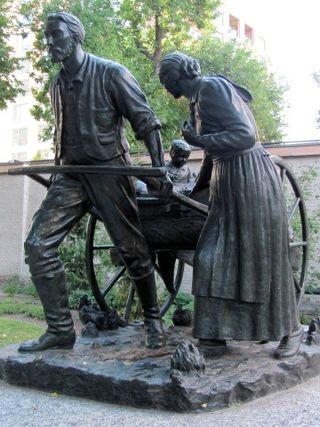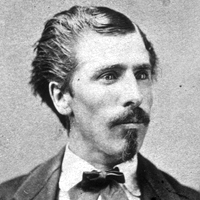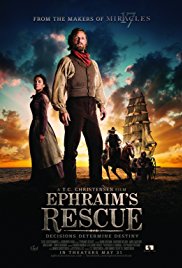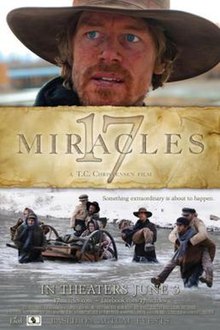
The Mormon Trail is the 1,300-mile (2,100 km) long route from Illinois to Utah that members of the Church of Jesus Christ of Latter-day Saints traveled from 1846-47. Today, the Mormon Trail is a part of the United States National Trails System, known as the Mormon Pioneer National Historic Trail.

Pioneer Day is an official holiday celebrated on July 24 in the American state of Utah, with some celebrations taking place in regions of surrounding states originally settled by Mormon pioneers. It commemorates the entry of Brigham Young and the first group of Mormon pioneers into the Salt Lake Valley on July 24, 1847, where the Latter-day Saints settled after being forced from Nauvoo, Illinois, and other locations in the eastern United States. Parades, fireworks, rodeos, and other festivities help commemorate the event. Similar to July 4, many local and all state-run government offices and many businesses are closed on Pioneer Day.
Mormon folk music is primarily composed of folk music which was sung by Mormon pioneers in present-day Utah from the mid-19th century through the early 20th century. A notable historical component of Utah music, the popularity of Mormon folk music declined along with traditional music nationally after the advent of music recording. However, the popularity of uniquely Mormon folk music had already begun its decline before the end of the 19th century. Mormon folk songs generally showcase pioneer-era Mormon unity and communal values.

The Mormon pioneers were members of the Church of Jesus Christ of Latter-day Saints, also known as Latter Day Saints, who migrated beginning in the mid-1840s until the late-1860s across the United States from the Midwest to the Salt Lake Valley in what is today the U.S. state of Utah. At the time of the planning of the exodus in 1846, the territory was part of the Republic of Mexico, with which the U.S. soon went to war over a border dispute left unresolved after the annexation of Texas. The Salt Lake Valley became American territory as a result of this war.

The Deseret News is the oldest continuously operating publication in the American west. Its multi-platform products feature journalism and commentary across the fields of politics, culture, family life, faith, sports, and entertainment. The Deseret News is based in Salt Lake City, Utah and is published by Deseret News Publishing Company, a subsidiary of Deseret Management Corporation, which is owned by the Church of Jesus Christ of Latter-day Saints. The publication's name is from the geographic area of Deseret identified by Utah's pioneer settlers, and much of the publication's reporting is rooted in that region.

Deseret Book is an American publishing company headquartered in Salt Lake City, Utah, that also operates a chain of bookstores throughout the western United States. It is a wholly owned subsidiary of Deseret Management Corporation (DMC), the holding company for business firms owned by the Church of Jesus Christ of Latter-day Saints. Deseret Book is a for-profit corporation registered in Utah. Deseret Book publishes under four imprints with media ranging from works explaining LDS theology and doctrine, LDS-related fiction, electronic resources, and sound recordings such as The Tabernacle Choir at Temple Square albums.

Martin's Cove is a historic site in Wyoming. The 933 acre (3.8 km²) cove is located 55 miles (89 km) southwest of Casper, Wyoming, in Natrona County. It is located on the Mormon Trail and is also part of the North Platte-Sweetwater segment of the Oregon Trail. The Cove was listed in the National Register of Historic Places on March 8, 1977.
Levi Savage Jr. is a prominent figure in the history of The Church of Jesus Christ of Latter-day Saints. He was one of the LDS Church's earliest missionaries to Asia and was one of the leaders of the Mormon pioneers traveling in the Willie Handcart Company.

The Mormon handcart pioneers were participants in the migration of members of the Church of Jesus Christ of Latter-day Saints to Salt Lake City, Utah, who used handcarts to transport their belongings. The Mormon handcart movement began in 1856 and continued until 1860.
Edward Bunker was a Mormon pioneer and community founder of Bunkerville, Nevada.

Danquart Anthon Weggeland, known as Dan was an artist and teacher in the early Utah Territory. He was sometimes referred to as the "Father of Utah Art".
Emily Hill Woodmansee was an English-born American Mormon poet and hymnwriter. Although only one of her hymns "As Sisters In Zion" is included in the 1985 LDS English language edition of the LDS Church's hymnbook, previous LDS Church hymnbooks have included more of her works.

Henry Harriman was one of the First Seven Presidents of the Seventy of the Church of Jesus Christ of Latter Day Saints from 1838 until his death. The town of Herriman, Utah was named after him.
Thomas C. Christensen is an American cinematographer, film director, and writer best known for his work on films related to the history of the Church of Jesus Christ of Latter-day Saints, including Joseph Smith: The Prophet of the Restoration, Gordon B. Hinckley: A Giant Among Men, 17 Miracles, and Ephraim's Rescue. He has made films about the Martin and Willie handcart companies who traversed the plains toward the Salt Lake Valley in late 1856. Christensen is also a member of the American Society of Cinematographers.

The Church of Jesus Christ of Latter-day Saints in Wyoming refers to the Church of Jesus Christ of Latter-day Saints and its members in Wyoming. The church's first congregation in Wyoming was organized in 1877. It has since grown to 67,454 members in 172 congregations.

John Rowe Moyle was a Mormon pioneer and a settler of Alpine, Utah. He was a master stonemason for the Salt Lake Temple, and was the carver of the inscription "Holiness to the Lord" on the temple's east side.

Ephraim's Rescue is a religious historical drama film by T. C. Christensen, released in 2013 by Excel Entertainment Group. It is based on the true stories of Mormon pioneers Ephraim Hanks and Thomas Dobson and their experiences in the handcart brigades. The film was released in select theaters across the United States in the spring of 2013.

The Mormon Trail Center at Winter Quarters is a museum and visitors' center of the Church of Jesus Christ of Latter-day Saints located in the Florence neighborhood of Omaha, Nebraska, United States. The museum interprets the story of the Mormon Trail along with the history of a temporary Mormon settlement known as Winter Quarters, which was located in the Florence area between 1846–1848.

The Willie and Martin handcart companies were two companies of Mormon handcart pioneers that were participating in the migration of members of the Church of Jesus Christ of Latter-day Saints to Salt Lake City, Utah and used handcarts to transport their belongings. The Mormon handcart movement began in 1856 and continued until 1860. The trek was disastrous for these two companies, which started their journey dangerously late and were caught by heavy snow and severe temperatures in central Wyoming. Despite a dramatic rescue effort, more than 210 of the 980 pioneers in these two companies died along the way. John Chislett, a survivor, wrote, "Many a father pulled his cart, with his little children on it, until the day preceding his death."

Edward Martin was born in 1818 and died in 1882. After joining the Church of Jesus Christ of Latter-day Saints in Britain, he immigrated to the United States and spent much of his life serving in various positions within the church. He is most prominently known for his role as captain of the Martin Handcart Company, a Mormon Handcart Pioneer company that suffered heavy losses when they encountered harsh winter conditions while traveling through Wyoming. He is one of many figures that played a prominent role in the Westward Expansion of the 19th century.












